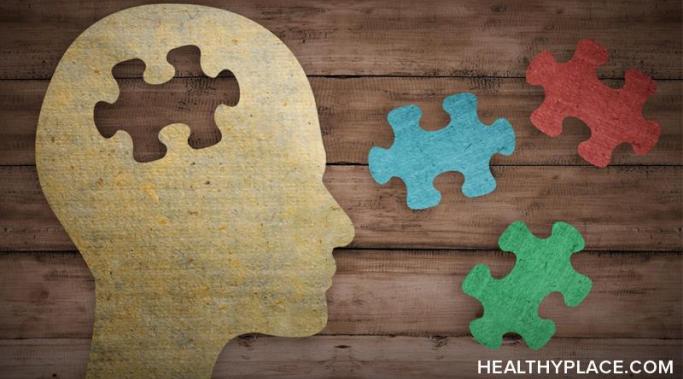Blogs
No one wants to see their child develop mental health issues or suffer in any way. Oftentimes parents with mental Illness are asked if we fear we'll pass our illness down to our children. I've always thought there are worse things to fear. Still, I can't ignore genetics, and I know my daughter is at a higher risk of developing a mental illness because I have schizoaffective disorder. So I wonder, is there a way to try to prevent it from happening? Or is my time better spent preparing her for the possibility?
My name is Megan Law, and I am the new author of "Mental Illness in the Family" here at HealthyPlace. I am very grateful for the opportunity to write this blog and to share my stories and experiences on living with family members with mental illness. Mental illness is increasingly prevalent in our society, but it continues to be misunderstood or sometimes even ignored. A significant stigma against those with mental illness still exists. I hope to help spread the message that having a family member diagnosed with mental illness is not the end. There is hope for all involved.
The idea that mental health costs us money as a society is factual, but this is not a useful strategy in reducing stigma. That said, there are a number of strategies used in the effort of reducing mental health stigma that do work. Within the advocacy community itself, I feel many, if not most, are spot on or on the right track. But doing a high-level look at some of the strategies used, it's time to rethink how we're going to slow the impact of mental health stigma.
When your anxiety keeps you awake, trying to fall asleep can be extremely difficult. It becomes an endless cycle where you feel anxious you aren't sleeping, and then you can't sleep because you are feeling anxious. Many people, including me, get especially anxious at night and aren't sure how to manage it as well before bed. In this article, we will cover how to fall asleep when your anxiety keeps you awake.
Is it possible to visualize anxiety away? This past week, I was watching an interview with an extraordinary rock climber named Alex Honnold. He has been climbing rock faces without a safety rope for years; and despite the terrifying nature of his exploits, he somehow maintains a state of calm even when thousands of feet above the ground. How does he do this? One strategy he uses is visualization. He visualizes anxiety away. Before each climb, Alex practices not only by climbing the rock face with ropes but also by imagining every step in climbing his route. He imagines what he'd do if certain things went wrong over and over again so that by the time he actually begins his climb, nothing can really phase him. By processing the challenges he'd face beforehand, Alex not only prepared himself for the physical challenge of his climbs, but also for the mental challenges.
Finding love as a transgender (trans) person is difficult. After recently leaving a long-term relationship, I've found myself back on the dating scene. Finding a romantic partner as a trans man isn't easy. Even the most affirming cisgender (a person whose gender conforms with his or her birth sex) people can have reservations about dating someone who's transgender. I don't blame people who aren't comfortable dating a trans person. Physical attraction is an important part of a healthy relationship and, if someone isn't attracted to my body, I understand that. But I also think it's important to recognize and eradicate transphobia in the dating scene to make finding a partner safe for everybody.
Income and health, especially mental health, often correlate; a side gig could potentially increase your levels of both health and income. According to the Money and Mental Health Policy Institute, a high majority of respondents stated that money issues like debt made their mental illnesses worse. While chipping away at debt won’t necessarily change your life, the research supports the conclusion that a side gig may help with health and income at the same time.
How do we define our personal values? In my post last week, "What Is Self-Worth", I explored the topic of self-worth. When we are living with low self-esteem, we often struggle to find self-worth. This comes from believing we are unable to succeed at the things we value personally. But where do these values come from? How do we decide what is important to us?
Harnessing the power of visualization can help you live an anxiety-free life. The previous post explored how visualization works. Visualization speaks to the brain on a deep level. Images and other imagined sensory input cause brain chemistry and neurological activity to react as if the imagined experiences were real. Further, the brain holds onto them for lasting change. While there are not strict rules, there are techniques that increase the effectiveness of visualization for creating and living an anxiety-free life. The following six tips can help you create a visualization practice for reducing anxiety.
Developing skills helps improve low self-esteem, and it's worth it to try. You see, when you have a healthy level of self-esteem, you are able to realize what your capacities are. You understand what you are capable of doing – and who you are capable of being. But if you suffer from low self-esteem, this kind of perspective becomes obscured. You struggle to see exactly what you are capable of. Low self-esteem can lead to extremely negative views, like how you aren’t capable of doing anything right, achieving anything positive, or progressing in any shape or form.









